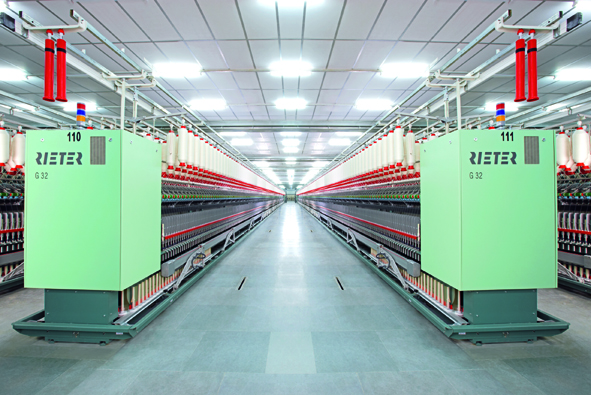The Indian Government has plans to get the global textile industry’s centre of gravity turned to India. For this to happen, the textile companies will have to fundamentally build their foundation around the efficient conversion of abundant cotton being grown within the country. This foundation will need to be reinforced through investments in larger spinning capacities, cutting-edge technologies, cost-effective infrastructure, equipment versatility and maximised machine uptime.
Being a basic necessity product, the Indian textile industry has benefitted a lot from growth in demand for textile products in India and at the global level. Equally, the Government’s policy emphasis is to modernize and develop various segments of the textile value chain has presented the Indian spinning industry with opportunities to grow further.
The organized textile sector has more than 3,400 textile mills in the small, medium and large-scale sector. The total installed capacity of spindles is the largest in the world with more than 50 million spindles and 8,42,000 rotors.
The Government under its Make in India initiative, has rightly focused its efforts on further development of the textiles sector. Schemes such as the Amended Technology Upgradation Fund Scheme, Focus Market/Product Scheme, Integrated Textile Parks/Clusters will augur well for the further development textile industry. Besides a number of State Governments have policies in place to promote the industry. The Government is also making a determined effort to ensure that the industry in India moves up the textile value chain by setting up/upgrading textile research institutions.
These measures are expected to boost investments across the textile value chain and in turn have the effect of boosting the demand for textile spinning machinery.
On the other hand, some industry experts also feel that the Indian spinning industry should witness consolidation. With raw cotton prices moving northward and yarn prices not moving in tandem, a number of recently-commissioned spinning capacities (taking advantage of the Government’s low-cost funds pipeline) could become unviable.
Yet a closer analysis on the so-called excess capacity in the Indian spinning industry shows nearly 50 per cent of the machines are old, outdated in terms of technology, of lower quality and less efficient. This has its negative impact on the spinning industry. Mills with older machines and technology are not energy efficient. As a result, they are not able to compete on price, quality and productivity. Eventually many of these mills are shutting down.
On the other hand, we see many Indian textile companies investing in the best available global technology, adopting industry best practices in terms of quality and improved productivity. All these have resulted in improved margins and business for the companies.
A recent interaction with the industry, reveals that companies are willing to invest in spinning and expand capacity. Recently we had Trident and Welspun investing in large spinning capacities of nearly 200, 000 spindles each. Himatsingka has gone for backward integration by setting up a spinning plant with a capacity of more than 210,000 spindles. This is its maiden investment in spinning.
India has huge strength with adequate captive availability of cotton, viscose and polyester. With some of the largest raw material source capacities available locally, India will continue to be a large base for spinning. With China reducing its focus on spinning, it opens up bigger opportunities for Indian companies. Yes, there are some mills that are reducing their dependence on cotton and converting a part of their capacity to manufacture viscose or polyester yarn. However, reports of increased investments and expansion of capacity in spinning are proving.
Another major advantage for Indian textile companies is availability of high quality spinning machines and components, manufactured in India. In addition to LMW, today all global machinery manufacturers have set up their manufacturing facility in India and this has helped in significantly reducing the initial investment on new plants. All these factors augurs well for the Indian textile industry more particularly for the spinning industry.
In this special feature we have tried to compile information on India’s largest spinning units, their current capacities and future expansion plans. We may have missed on some of the important companies mainly because we didn’t receive their response on time.
Compiled by K. Gopalakrishnan & Rajeswari Prasad
